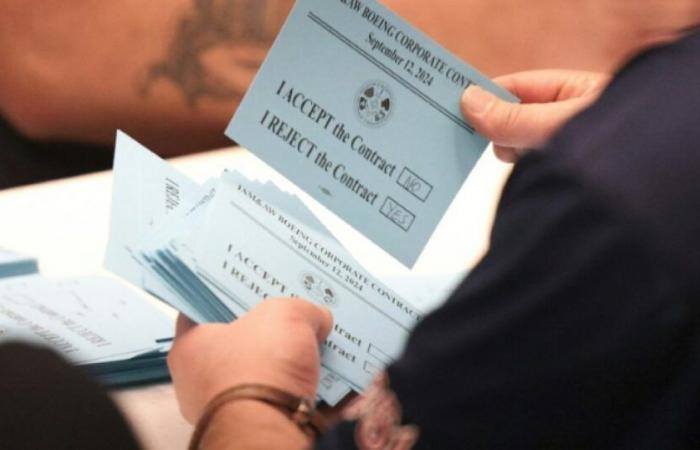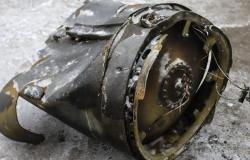And three! The more than 33,000 striking Boeing workers are voting on Monday on a new draft social agreement providing for a wage increase very close to their demands, but not the restoration of the old retirement system.
The project announced Thursday evening by IAM-District 751, branch of the machinists' union (IAM) in the Seattle region (northwest), proposes a wage increase of 38% over the four years of the social agreement. The union demanded 40%.
The strike began on September 13.
“I think Boeing can do better. They can give us back our pension and do more in terms of work-life balance,” said Mike Corsetti, quality inspector for thirteen years, on Friday.
Like many employees, he wants the reestablishment of the system with a guaranteed amount of retirement pension – 42% of current union members had it -, abolished by a social agreement in 2014 in favor of a capitalization system.
For Boeing, this backpedaling is inconceivable because it is “excessively expensive”.
Will the new conditions be enough to convince the diehards to ratify this text? A simple majority is sufficient for this vote which must end at 03:00 GMT on Tuesday, with a result expected in the evening.
According to the Anderson Economic Group, this is the costliest strike of this century in the United States with more than $11.56 billion in direct impact in seven weeks, including $6.50 billion in shortfalls. win for Boeing and 2.87 billion for its suppliers.
– “Ensemble” –
“It's time we all come together and focus on getting the company back to producing the best planes in the world,” Kelly Ortberg, Boeing's boss since August, said in a message to employees Friday.
According to the president of IAM-District 751, Jon Holden, interviewed by the Seattle Times, Kelly Ortberg warned that in the event of another rejection, “the next offer (would be) less favorable”.
The latter had not previously taken part directly in the negotiations.
This is Boeing's fourth offer since the beginning of September, but the third submitted to a vote by members.
The first, rejected on September 12 by nearly 95% of union members who also voted for an immediate strike, provided for an increase of 25%. Boeing then proposed 30%, then 35% and, finally, 38%.
The group also reinstated an annual bonus (4% of annual salary), increased the ratification bonus (from 3,000 to 12,000 dollars) and increased the contribution to the funded retirement plan.
It has maintained its commitment to manufacturing its next plane – expected by 2035 – in the Seattle region, birthplace of Boeing, which represents a guarantee of tens of thousands of jobs for several decades.
“This offer is pretty good,” said Kamie Bryan, a Boeing employee for 18 years and determined to approve it this time. “Everyone I’ve talked to since it’s been public likes it.”
– Food bank –
With the strike, she says she can “hold on financially until December” but “I have a lot of unionized brothers and sisters who are struggling”, mentioning recourse to the food bank.
The strikers, without health insurance since the end of September, have received $250 per week from the union since the fourth week of the strike.
Union leaders had recommended ratification of the first offer, arguing that they had no guarantee of obtaining more with a walkout, but they abstained in the second vote (64% rejection).
This time, Jon Holden is very clear: “You can, with complete confidence, declare victory, vote in favor of this agreement and benefit future generations,” he wrote on the union website .
According to him, the salary increase will actually reach 43.65% at the end of the contract since the reference remuneration will increase from year to year.
“With luck, they will approve it. A salary increase of 38%, they should jump on the windfall,” Michael O'Leary, boss of Ryanair, commented on CNBC on Monday.
A major customer of Boeing, it estimates that delivery and certification delays (737 MAX 7 and 10) will deprive it of 15 million passengers in 2024 and 2025.
The end of the strike is crucial for Boeing, in great financial difficulties because the walkout paralyzes the two factories producing the 737 – its flagship plane -, the 777, the 767 and several military programs.






